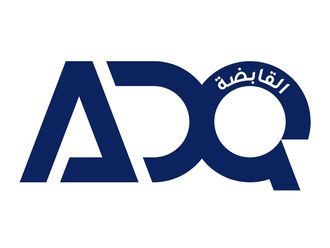
Hong Kong: After heading into the uncharted territory of quantitative easing, the world’s central banks are starting to plan their course through the uncharted waters of quantitative tightening.
How the Federal Reserve, European Central Bank and — eventually — the Bank of Japan handle the transition could make the difference between a global rerun of the 2013 “taper tantrum,” or the near undetectable market response to China’s rundown of US Treasuries in recent years. Combined, the balance sheets of the three now total about $13 trillion (Dh47.7 trillion), equating to greater than either China’s or the euro region’s economy.
Former Fed Chair Ben S. Bernanke — who triggered the 2013 sell-off in risk assets with his quip on tapering asset purchases — has argued for a preset strategy to shrink the balance sheet. Current Vice-Chairman Stanley Fischer says he doesn’t see a replay of the 2013 tantrum, but the best laid plans of central bankers would soon go awry if markets can’t digest the great unwinding.
“You know what they say about mountaineering right? The descent is always more dangerous than the ascent,” said Stephen Jen, London-based chief executive of hedge fund Eurizon SLJ Capital Ltd. “Shrinking the balance sheet will be the descent.”
Economists and investors are stepping up analysis of the implications of balance sheet contraction after minutes of the Federal Open Market Committee meeting last month showed officials favour kicking off the process as soon as this year.
BOJ, ECB
While the BOJ appears to be some distance from shrinking its balance sheet, Governor Haruhiko Kuroda has said that’s one of the tasks the BOJ will face when it exits its monetary easing policies. That would only be after inflation exceeds 2 per cent, which the BOJ forecasts will come sometime in the year starting April 2018.
The ECB’s balance sheet will continue to grow until at least the end of this year and isn’t likely to shrink until well after it finally winds down asset purchases. Any discussion on when to start shrinking appears to be some distance away.
A key unknown is how the heavily indebted global economy can cope with the rising interest rates that are likely to result from stimulus withdrawal. As central banks squeeze their balance sheets, they will add selling pressure on longer-dated bonds and effectively push up borrowing costs. Getting the balance right won’t be easy.
“In practice, the FOMC will probably have to determine the appropriate terminal level” of the balance sheet “through experience and observation of market functioning as it gradually shrinks,” David Mericle, an economist at Goldman Sachs Group Inc, wrote in a recent note.
All three main central banks in the largest developed economies used government bonds as a major avenue for monetary expansion. The Fed also accumulated almost one-quarter of the mortgage bonds sold by government-linked agencies over the last year.
Balance sheet rundown
Underscoring just how diverse the programmes have become, the ECB’s securities purchases have included French yoghurt-maker bonds, while the BOJ’s holdings through exchange traded funds include shares of Japan’s top soy-sauce brewer.
Fed officials’ current game plan is to start the balance sheet rundown with a phasing out of reinvestment in maturing securities. The central bank will have $426 billion of its Treasuries mature in 2018 and another $357 billion in 2019. “If the Fed tapers reinvestments, the market will have to find a way to absorb the additional supply,” Societe Generale SA analysts led by Brigitte Richard-Hidden wrote in a recent note.
Bernanke in January laid out the case for a permanently large balance sheet, arguing in part that this is needed to ensure the effectiveness of monetary policy decisions. The argument is that it’s easier for the Fed to raise and lower borrowing costs using the rate it pays commercial banks for their reserves than it would be to return to the pre-crisis days of adding or subtracting marginal amounts of funds in the overnight interbank market.
Wild card
A wild card is the potential overhaul of the Fed board that’s open to President Donald Trump. With Janet Yellen’s term as chair due in February, and three board-member nominations pending, the Trump administration has the scope to affect the balance sheet strategy. While Trump has told the Wall Street Journal he is open to renominating Yellen, some Republicans have encouraged an exit from credit markets, raising the risk for volatility.
How markets react could also affect the outlook for the Fed’s benchmark overnight rate target, according to Joseph LaVorgna, chief US economist at Deutsche Bank Securities Inc. He notes that during the 2013 taper tantrum, 10-year Treasury yields climbed over 3 per cent from about 1.6 per cent before Bernanke signalled a phasing-out of asset purchases.
“The Fed will attempt to avoid a repeat of the taper tantrum by thoroughly preparing the markets before starting to cut its balance sheet,” LaVorgna predicted.
In a speech prepared for delivery at Columbia University in New York on Monday, Fischer said that the muted response of investors so far to the emerging details of the plan suggests that the out-sized financial market moves seen four years ago probably will be avoided.
As for euro area officials, when they turn to balance sheet contraction they may have less to debate because the ECB’s balance sheet before the crisis was already much bigger relative to the size of the economy than the Fed’s. That stems from its much greater role in providing liquidity to banks on a regular basis.
Some asset managers see a sell-off in European credit markets when the ECB tapers — read about that here.
The impact of an ECB phase-out of asset purchases could have knock-on effects outside of Europe, illustrating again the potential for unintended consequences from unorthodox monetary actions. European investors took money out of the euro area at a record pace to escape the negative yields resulting from ECB policy, and much of that went into Treasuries. That leaves the US government bond market potentially facing a double whammy from both ECB and Fed balance sheet contraction in coming years.
Tighter ECB threat opens risk to treasuries’ foreign-demand wane
When it comes to Japan, the country where modern-era QE began in 2001, the BOJ’s balance sheet is currently set to continue swelling given its target for asset purchases of about 80 trillion yen ($737 billion) a year. With policymakers having adopted a specific strategy of targeting government bond yields, the prospects for major volatility are slim in that market.
The bigger risk for investors lies in any phasing out of purchases of stocks and real-estate investment trusts, where the BOJ has come to play a large role.
If the BOJ did come to the point of seeking an exit from its risk-asset investments, there’s a template for disposal from an Asian neighbour. The Hong Kong Monetary Authority took the extraordinary step of buying more than 7 per cent of the benchmark Hang Seng Index in August 1998 during the throes of the Asian financial crisis. As soon as the next year, it began to implement a disposal plan once the turmoil had passed.
HKMA officials came up with a tracker fund of Hong Kong shares, composed of the central bank’s holdings, then sold it in batches over a period of years. With the BOJ’s holdings already mainly in the form of exchange-traded funds, it could be even easier. The Japanese government’s pension fund has also been a ready buyer of Japanese shares, offering a potentially market-friendly solution.
Still, care will be needed.
“Central banks need to be very cautious in starting to run down their balance sheets,” said Shane Oliver, head of investment strategy at AMP Capital Investors in Sydney. “They need to reiterate that it’s conditional on continued economic improvement, that it will be gradual and that it could be a substitute at times for rate hikes.”











